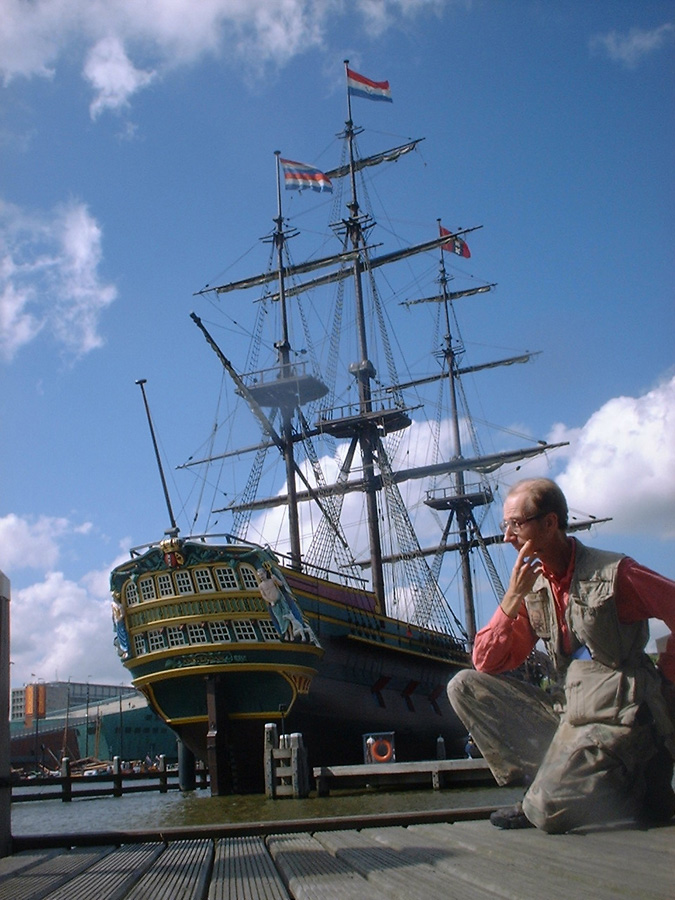




Variations on the Grosse Fuge
Tempo markings
Allegro: Slow: Allegro Bigga Fuga: Largo: Allegro Bigga Fuga:
Moderato I: Piu Mosso: Moderato II: Fugato Bordello: Really Really Largo: Allegro: Big Slow Ending
While a student at Eastman School of Music in 1973-74, I listened every other
night to Beethoven�s opus 133 string quartet Grosse Fuge with a couple
of friends for at least two months. (The alternate nights were usually spent
with Hammerklavier.) As a result this string quartet was branded on my
brain, which may not have been the best thing for my early composition
style�which tended to the too noisy and too crowded with notes, not to mention
horribly hard to play.
I went to NTSU (now UNT) in Denton Texas in the fall of 1974, and started
working on a string quintet/string orchestra piece that would be a variation on
the Grosse Fuge�re-writing the piece in my own idiom and with
significant differences. After about two years of work it was premiered at my
senior composition recital in 1977. The performance was rather rough and the
recital failed; I left school without a degree. (I returned to NTSU in the
early �80s and got a BM in 1984.)
I took a break from composing in the fall of 1985 to start work on an
experiment in transcendental physics. After moving to Las Cruces New Mexico in
the fall of 1986, my project was at a standstill, and I livened up my life in a
desert trailer slum by composing a completely new variation on the Grosse
Fuge, disposing of the string quintet and using instead five synthesizers.
I had written new and arranged older works for five synths. With this
experience, but not having a synth or any electronic equipment myself, I simply
imagined what I would like the piece to be like and designed it for live
performance. The composition took from January 6 to March 22, 1987. I could
neither find performers nor afford equipment to sequence or record the synth
scores I�d written.
In 2003 I started using Finale which allowed synthesis, and so put a recording
on my first CD in September 2003. I revised the score in January 2005 but still
did not have a performable piece. I then realized in early 2007 that a string
quartet could take on the most difficult passages, leaving more playable
material for an orchestra with a reasonable skill level. A decent college
orchestra should be able to play this work; the quartet will have to be of
professional quality. During the orchestration I recomposed some sections and
made several improvements. In late 2014, I revised the layout of the orchestral
score and extracted a fresh set of parts.
There is also a version for piano quintet where the string quartet takes on
considerably more material. As a result it is not simply a version with piano
taking orchestral parts, but rather is a unique and separate rendition. Not
surprisingly, considerable skill for all performers is required for the chamber
version. The piano quintet was premiered by the Ciompi Quartet with Randall
Love, piano, at the NC Museum of Art in January 2009.
With no apology, this music is intense, hypercomplex, and maybe just a little
crazy�as such not so different from the original; but if a focused listener
someday can achieve some familiarity with the music, I do hope that the sweat
required for its production will have been worthwhile.
Whoever tells a lie cannot be pure in heart�and only the pure in heart can make a good soup.
---L. v. B.